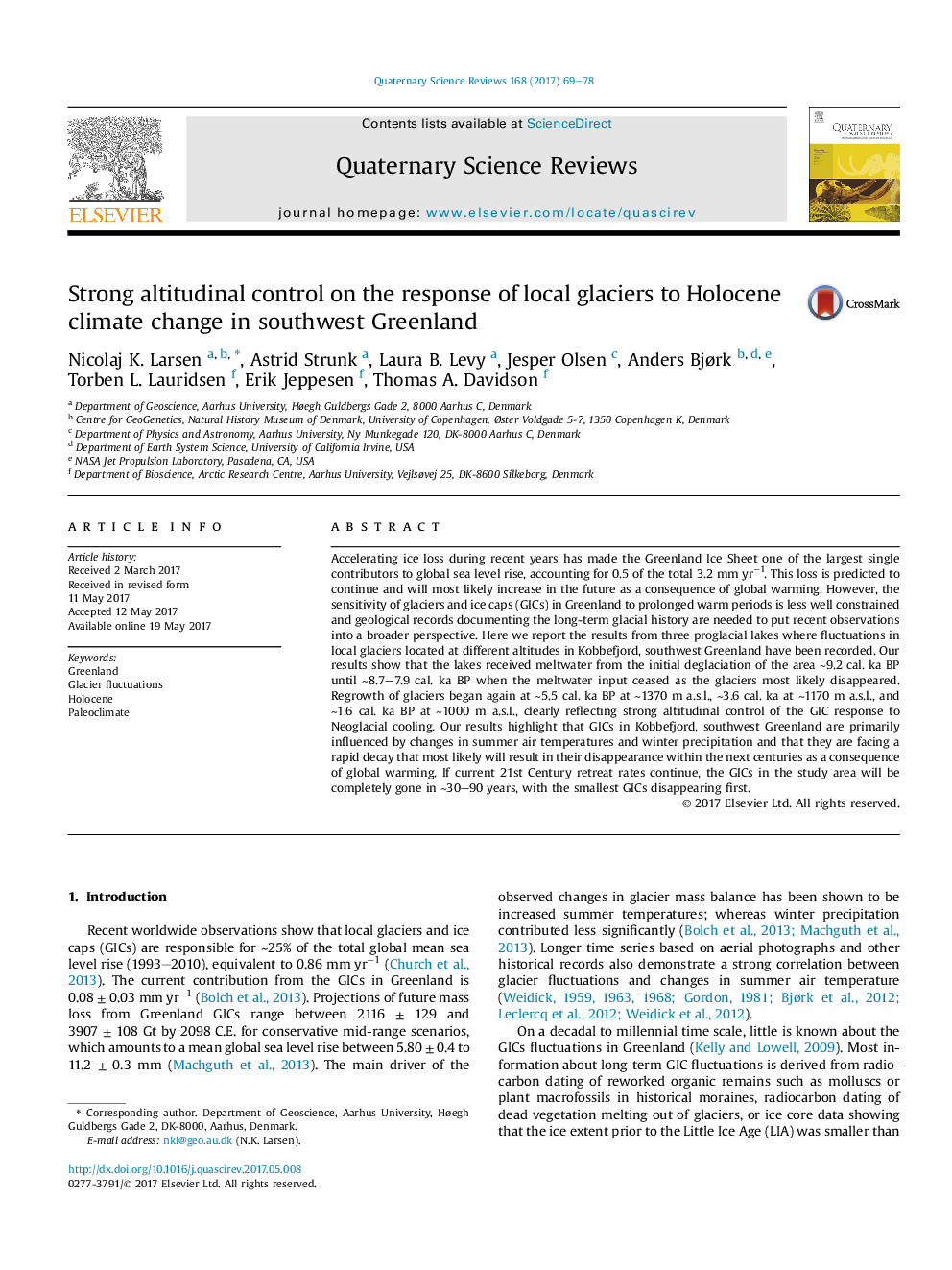| Article ID | Journal | Published Year | Pages | File Type |
|---|---|---|---|---|
| 5786609 | Quaternary Science Reviews | 2017 | 10 Pages |
â¢We cored and analysed three proglacial lake records from Kobbefjord, southeast Greenland.â¢Local glaciers and ice caps were completely absent during the Holocene Thermal Maximum.â¢Renewed ice growth at 5.5 cal. ka BP with successive glacier expansion and ELA lowering at 3.6, 1.6 and 0.8 cal. ka BP.â¢We observe strong altitudinal control on ice margin fluctuations.â¢Synchronous early Holocene glacier fluctuations in North Atlantic are mainly driven by summer insolation.
Accelerating ice loss during recent years has made the Greenland Ice Sheet one of the largest single contributors to global sea level rise, accounting for 0.5 of the total 3.2 mm yrâ1. This loss is predicted to continue and will most likely increase in the future as a consequence of global warming. However, the sensitivity of glaciers and ice caps (GICs) in Greenland to prolonged warm periods is less well constrained and geological records documenting the long-term glacial history are needed to put recent observations into a broader perspective. Here we report the results from three proglacial lakes where fluctuations in local glaciers located at different altitudes in Kobbefjord, southwest Greenland have been recorded. Our results show that the lakes received meltwater from the initial deglaciation of the area â¼9.2 cal. ka BP until â¼8.7-7.9 cal. ka BP when the meltwater input ceased as the glaciers most likely disappeared. Regrowth of glaciers began again at â¼5.5 cal. ka BP at â¼1370 m a.s.l., â¼3.6 cal. ka at â¼1170 m a.s.l., and â¼1.6 cal. ka BP at â¼1000 m a.s.l., clearly reflecting strong altitudinal control of the GIC response to Neoglacial cooling. Our results highlight that GICs in Kobbefjord, southwest Greenland are primarily influenced by changes in summer air temperatures and winter precipitation and that they are facing a rapid decay that most likely will result in their disappearance within the next centuries as a consequence of global warming. If current 21st Century retreat rates continue, the GICs in the study area will be completely gone in â¼30-90 years, with the smallest GICs disappearing first.
